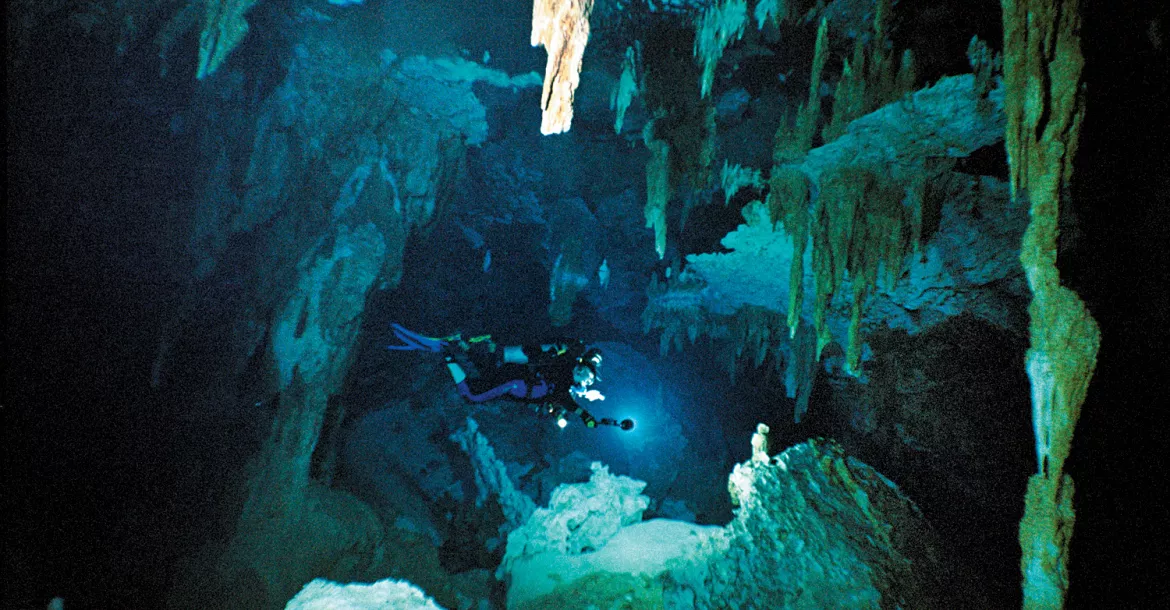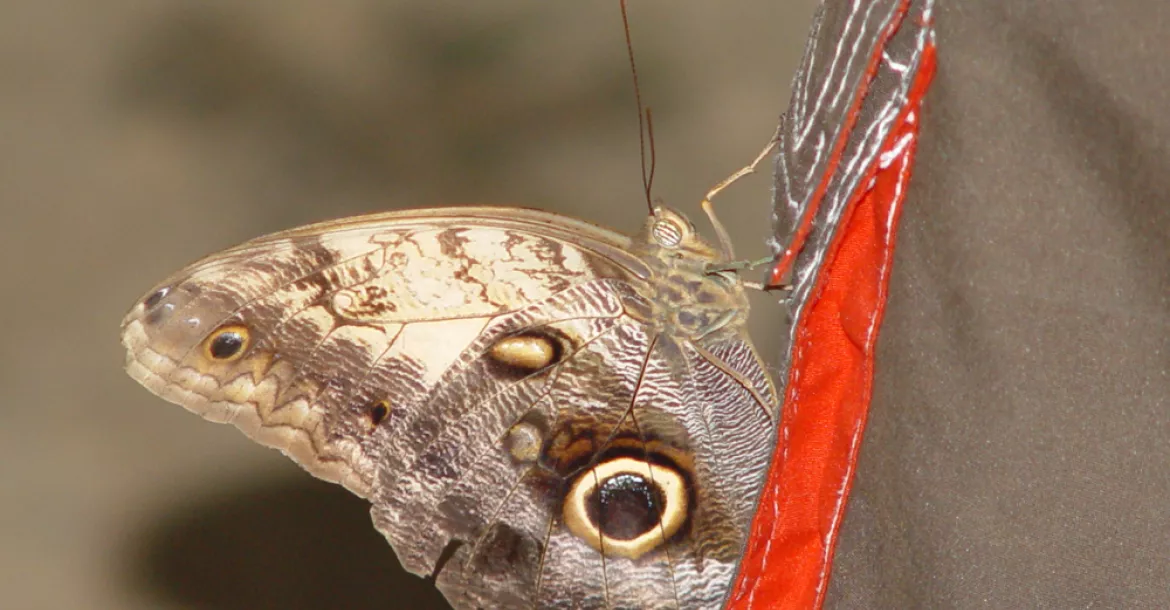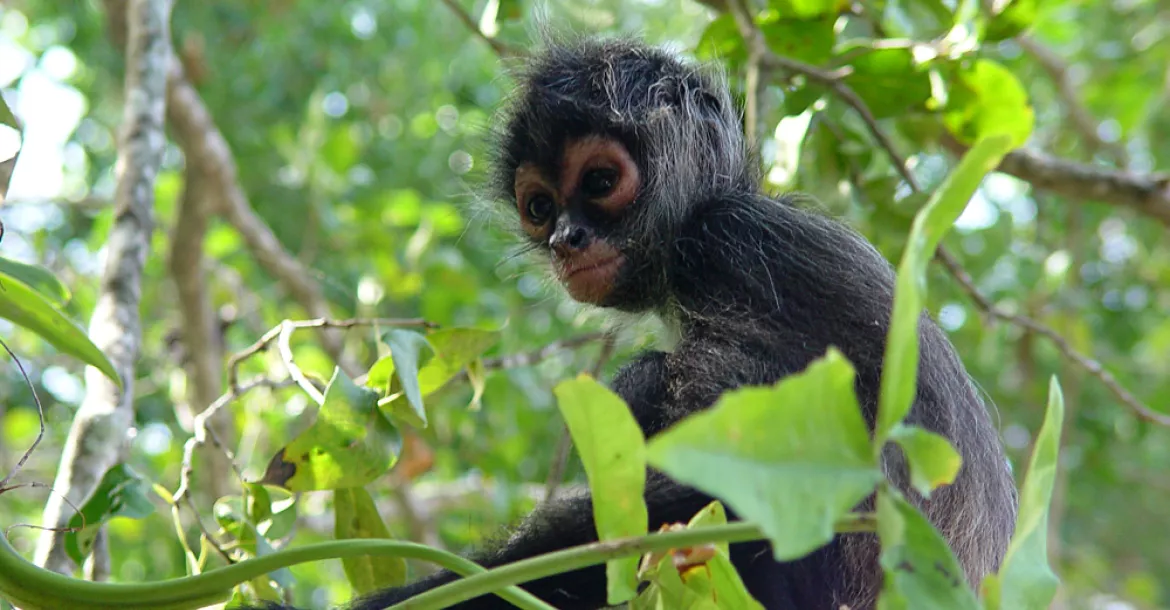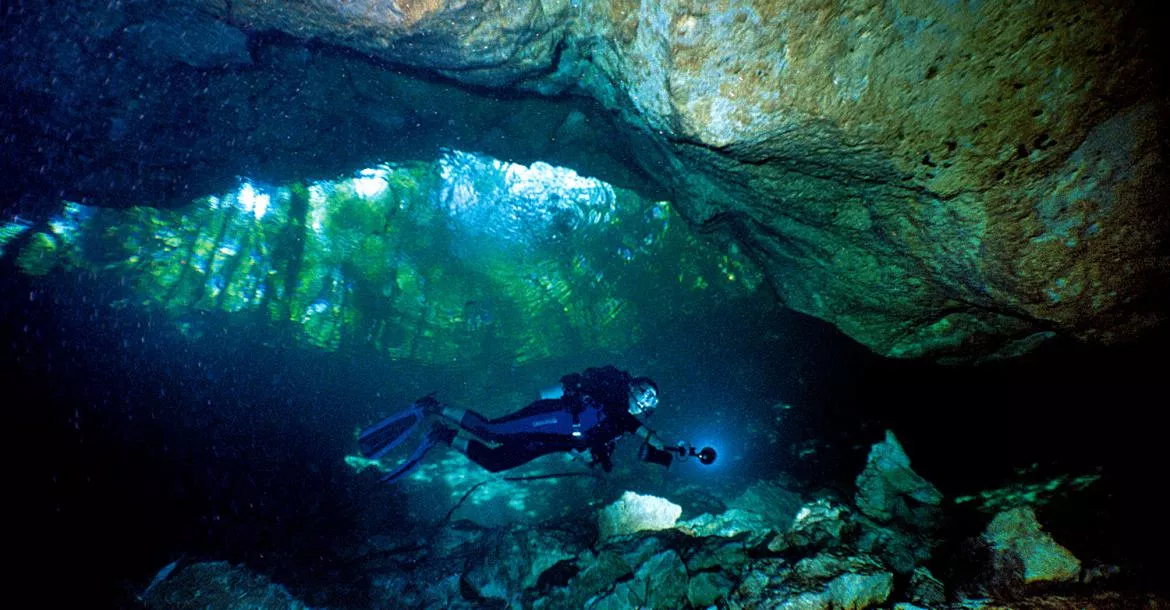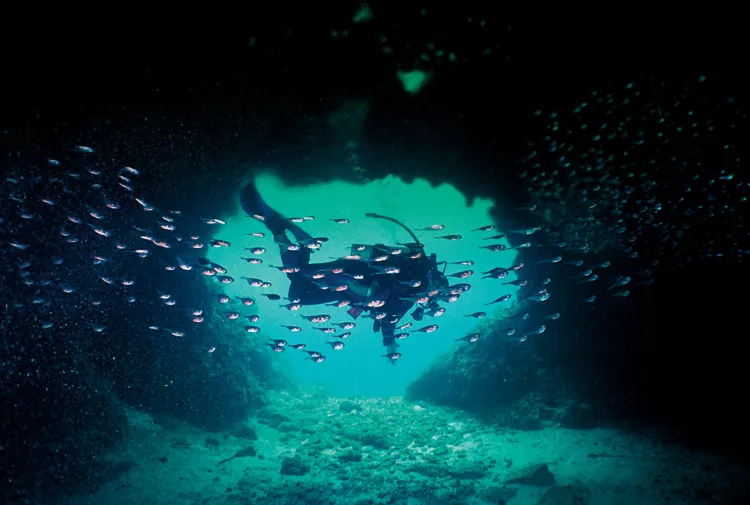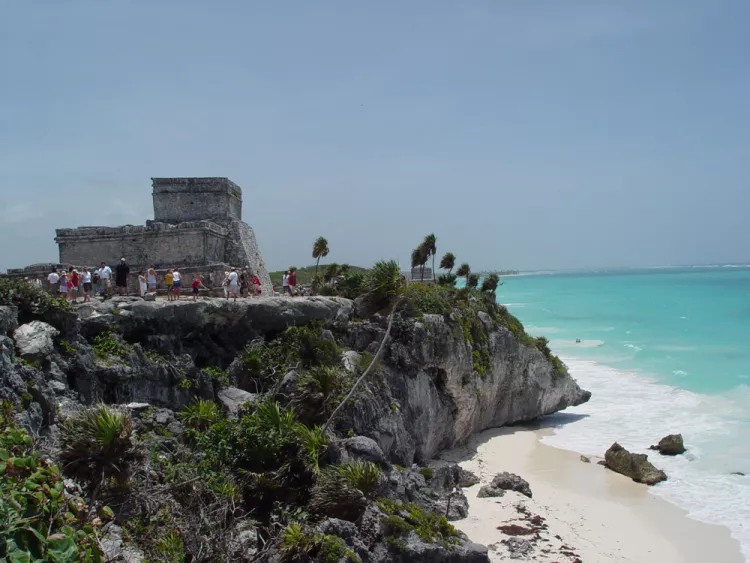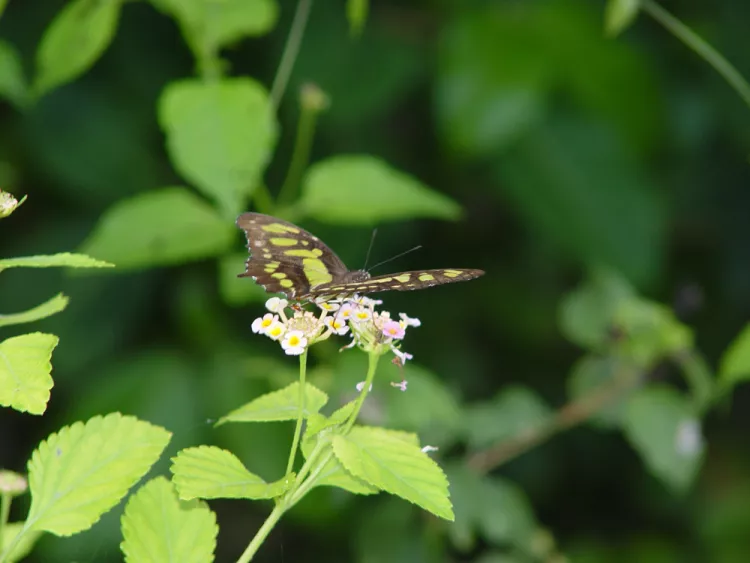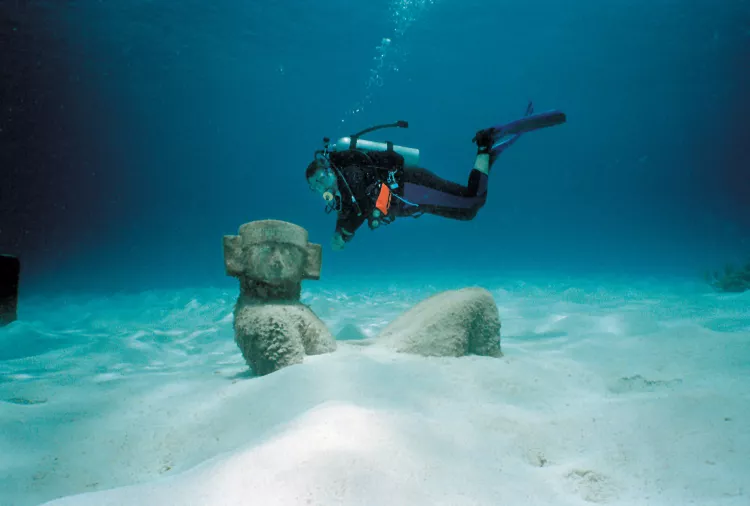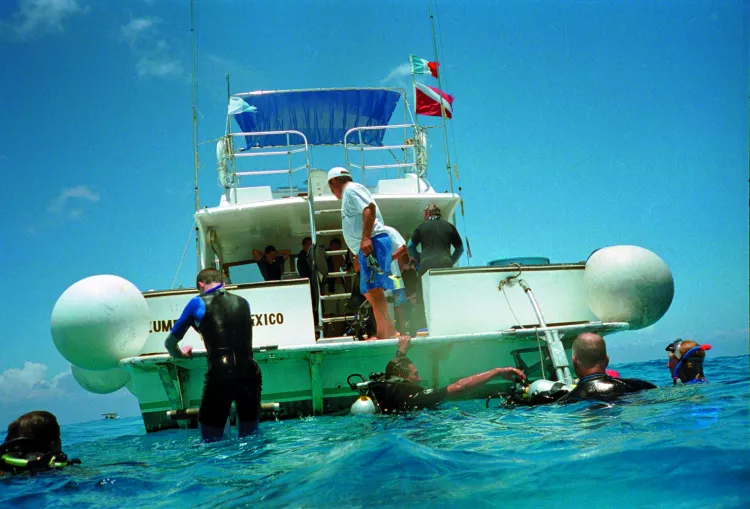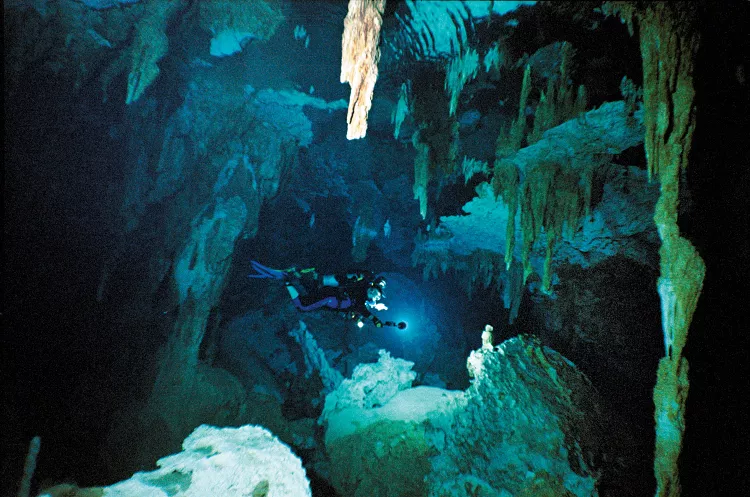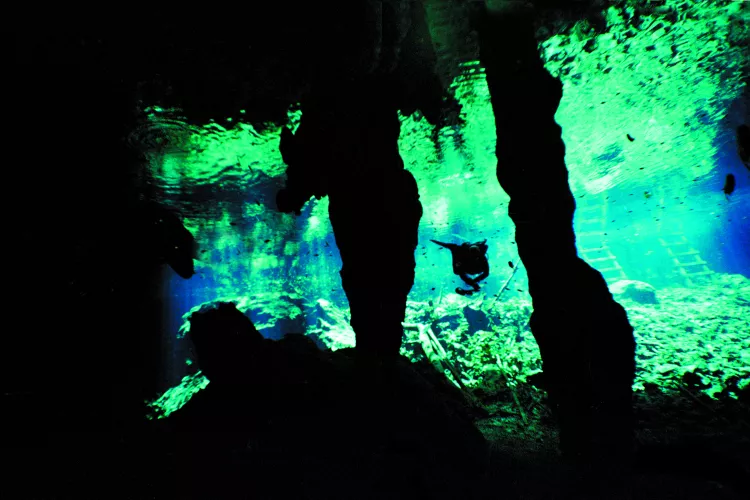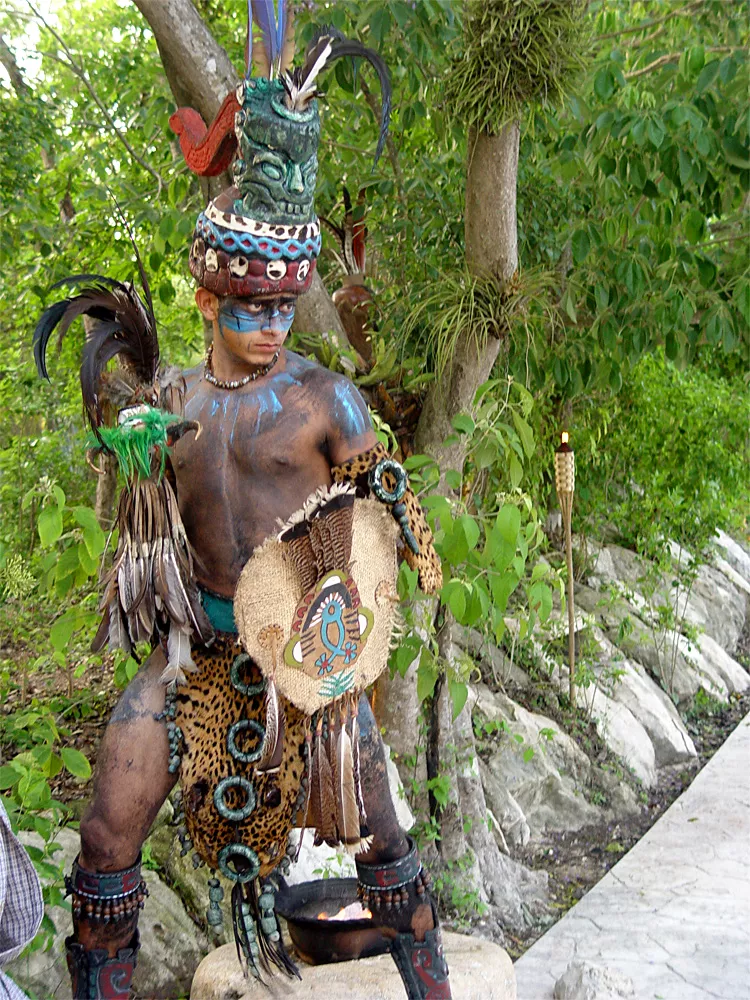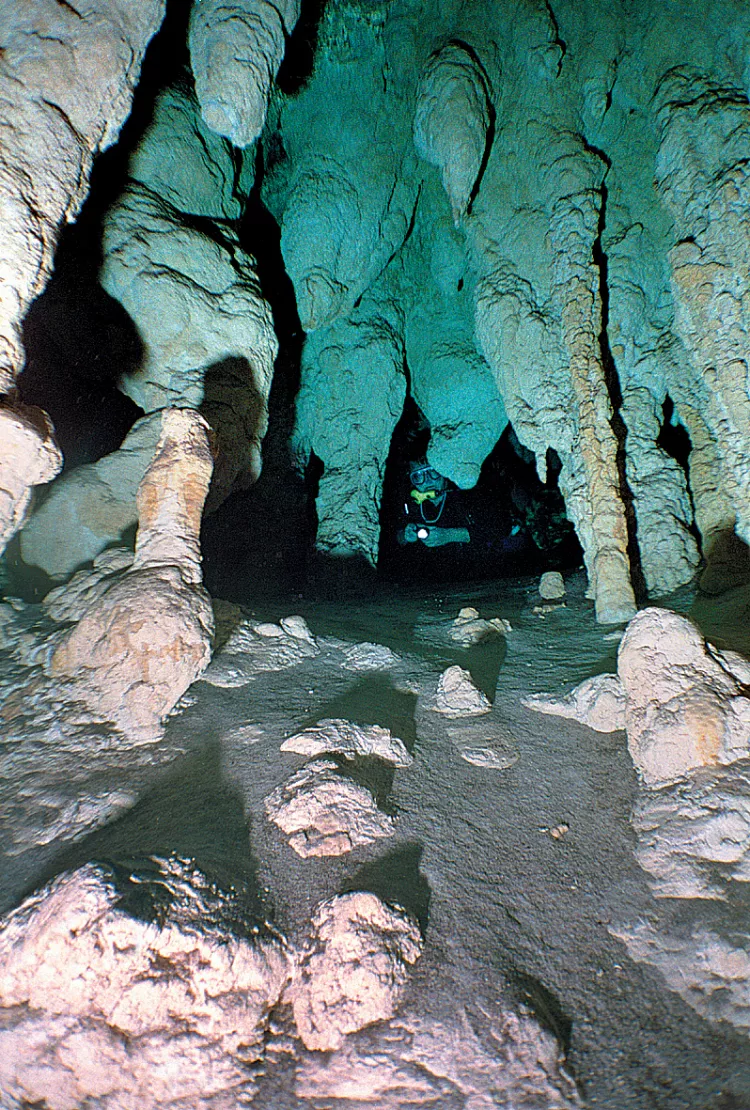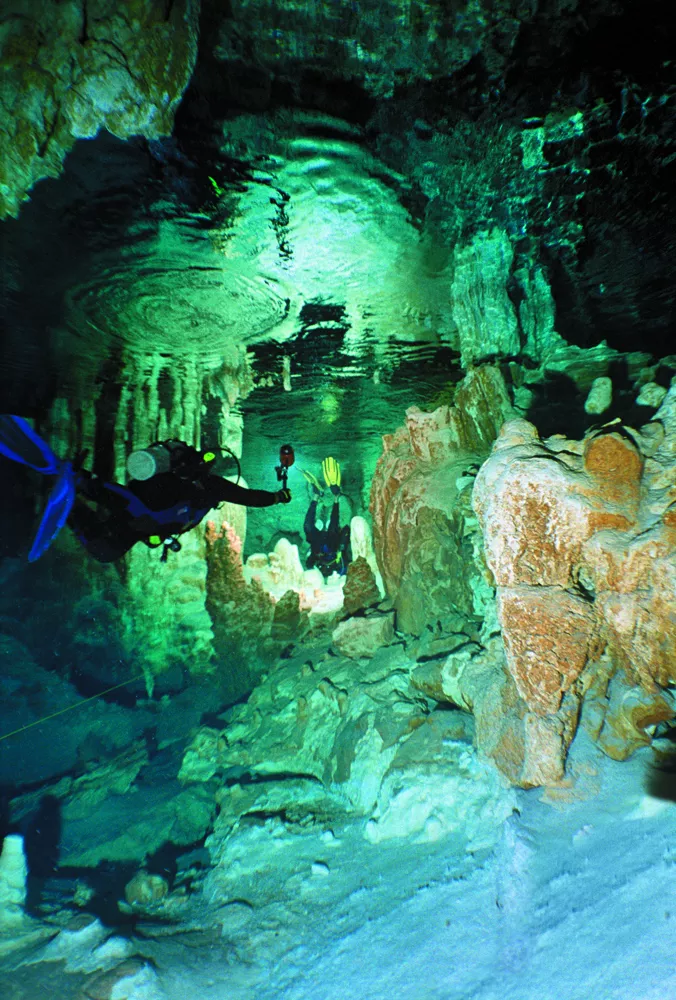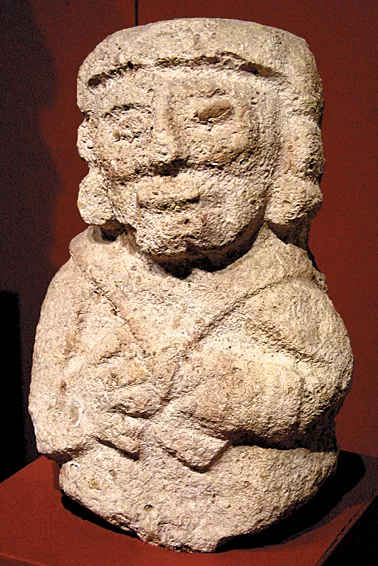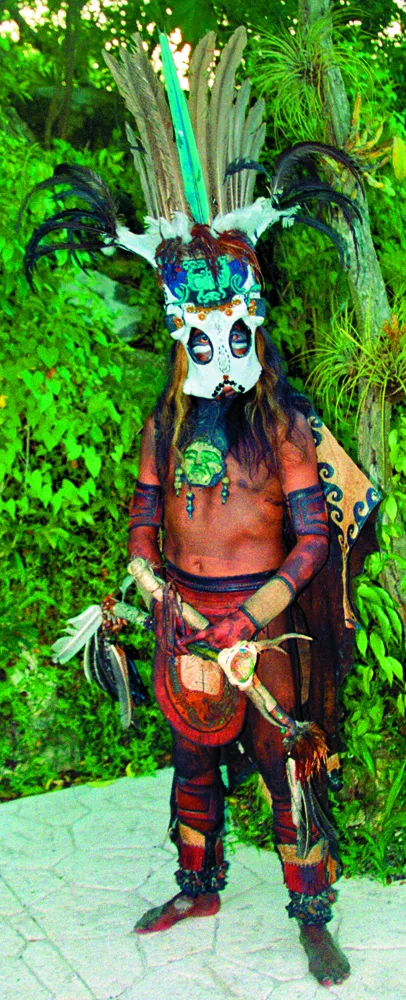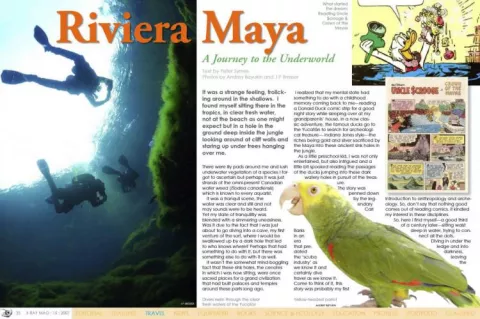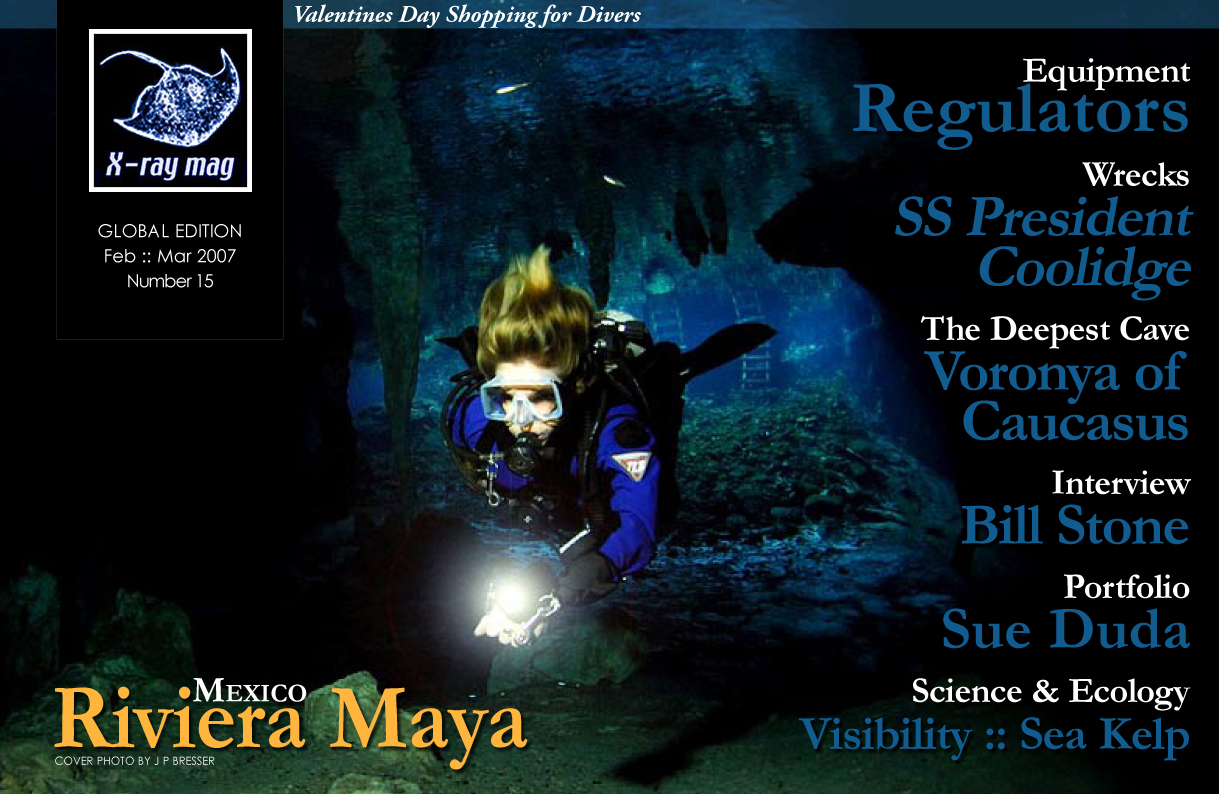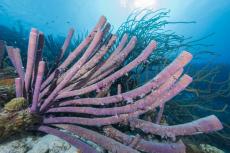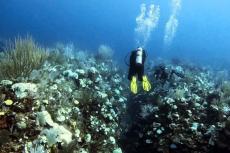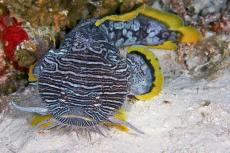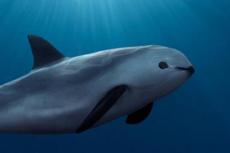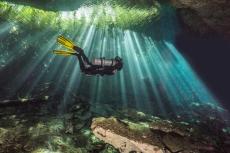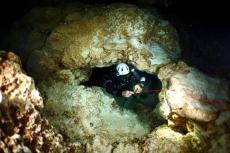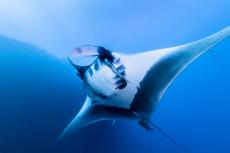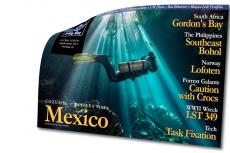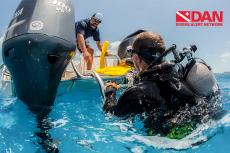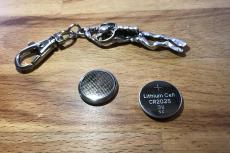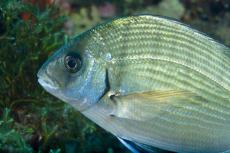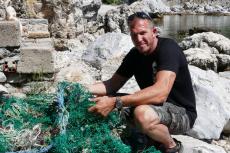The Yucatan Peninsula is located in the south of the contiguous Mexican states. The ground here is heated by the tropical sun—35°C makes for a hot and impassable jungle. The bogs—littered with iguanas, snakes and crocodiles—are drying up. A rare tropical storm suddenly and unexpectedly flies up from the Caribbean Sea. Black clouds, peals of thunder, bright lighting, squalls of wind and rain last no more than 15–20 minutes and again the damp stuffy mind-melting weight of the stifling heat returns. It is not the best place to dwell for the white man. But this land saw an era over 1,000 years ago, when it was occupied by a surprisingly small-in-stature, dark-skinned people—the Maya.
Contributed by
The Mayans completely adapted to the conditions of their environment, with superb observations of the nature around them, learning to cultivate maize and settling throughout their lands. In homage to their Gods, they constructed temples, pyramids and observatories. They developed an alphabet and wrote texts. They devised their own calendar, composed legends and wrote down history of unique peoples. Mayans have maintained their unique guttural language and the original tenets of their culture up to current times.
Over 30 years ago, the government of Mexico made a decision that changed the life of its native peoples. The government set out to construct a new resort on the southeast coast of the Yukatàn Peninsula on a place hitherto unknown in a small fishing village. The city is now known as Cancun, which translated from the Mayan language means “the nest of the Snake” (or the place where the Mayan god lives), and includes the area adjoining it which has been built up with luxurious hotel—the Riviera Maya.
Today, Cancun and the Riviera Maya are popular vacation spots and make-up the diving capital of the Mexican Caribbean islands. Here, one will find smart hotels, splendid palm trees, snow-white beaches of coral sand, the azure sea, everywhere smiling cheerful people with fins, snorkels, masks and cylinders on their backs, a casino, noisy discos, night clubs and the popular Mexican bullfight every Wednesday. There are huge divers’ supermarkets where it is possible to buy everything one needs for diving. There are fleets of dive boats heading out to sea every morning with enthusiastic skin divers onboard.
Certainly, there is interesting for everyone in plunging into the underwater world of the Caribbean Sea, to admire the multi-colored tropical fishes, to dive in thickets of soft corals, to take pleasure in the strongest sea currents around and to explore the underwater bronze guns of Spanish galleons even though the maximal diving depth in this area does not exceed 18 meters, and in the vicinity of the city, there is only one wreck. But one can see the same diving pleasures you can find here in any other place around Caribbean basin. So why do experts recommend coming to this location? To go here only for sea diving? Definitely not. So why then, during the high season, do 70,000 visitors come when all the local hotels have put up the “sold out” notice? Why do these people choose Cancun and the Riviera Maya? The answer to this question is that only here, on the Riviera Maya, is it possible to see one of the truly great diving miracles of the world—the surprising and exciting world of the underwater caves of the Yukatàn.
An old Mayan legend tells a story about how the gods, when they created the land, filled the peninsula with fresh water, which they say is the “blood” feeding the ground of the Maya. When limestone collapses within a cave, freshwater lakes (in the Maya language, “cenotes”) become the inputs to the magical underground world of the ancient Mayan gods. In the past, during seasons of heavy draught, cenotes were for Mayans the unique, sacred sources of fresh water. Here, at the cenotes' edge, Mayan priests made human sacrifices and dumped the bodies of the victims into the caverns. From here, they took water for irrigating maize fields. But the terrible pagan customs are long past gone in history, and now the underwater caves have become the focus of mass pilgrimages of skin divers from all over the world.
People that come here in the hottest part of the day will take pleasure in the crystal clear cool waters (+24°C) and swim for a while at the mouth of a cavern with only a mask, a snorkel and a small torch in hand. Those who are more brave dive here with a skilled guide—an instructor with one cylinder behind his back and a noisy cheerful company of friends. The rules of cave diving are simple enough: one guide should have no more than four underwater tourists, and it is necessary for all participants on the cave diving excursion to have an Open Water certificate.
Cenote Etiquette
At the entrance of the cenotes, you will have to hear a short lecture on how to correctly do the frog kick with your fins, how to show signals by torch, how to use a guide line and how to use the “one third” tank rule. As a rule, beginning cave divers dive in water with a visibility of no less than 10 meters, a depth of no more than 33 meters and a distance from the cenote’s entrance of no more than 65 meters. Often, the dive group’s departure is a distance of 300-400 meters for 35-40 minutes from the entrance of the cave, and on many sites of such routes, there is absolutely no daylight visible.
During these routes, it is always possible to find several air chambers under the arch of a cave or outputs in dry cave halls. The popularity of cave diving here has become so great that all dive centers offer similar rounds and will organize excursions almost daily. In the afternoon, at an input to a cenote, it is sometimes possible to see the lines of several divers who are waiting for an opportunity just to begin a dive. People go cave diving here only for the pleasure of it. This is the reason why it is has become so attractive for so many people.
Underwater caves expand the diver’s erudition and open for them the mysterious world of the Mayan culture. What you will see here completely contradicts preconceived opinions…that cave diving is only for the elite—groups of single-minded people who always put on black equipment and cannot live without the feeling of constant danger… those who like to “sit on an adrenaline needle” for a long time.
Cave Diving Tourism
Perfectly organized mass cave diving tourism is the brightest distinctive feature and unconditional advantage of Cancun and Riviera Maya dive centers. It is a real cave diving paradise. To be on the Yukatàn and never dive the underwater caves is to miss an opportunity to achieve a diver’s greatest success.
On the peninsula today, it is known that there are over 3,000 cenotes, entrances to underwater limestone labyrinths. Through the efforts of many brave cave divers, it was possible to prove that many of these cenotes were connected with each other and had a general hydrological system. This means that if you dive in one of these cenotes, you can find an exit on the surface far from the place where you started your dive and come out in another part of the jungle. So Nohoch Nah Chich, one of the longest cave diving labyrinths, having a total extent of underwater passages of more than 68 kilometers. And in the deepest cave system, Dos Ojos, a depth of 106 meters has already been reached. Modern explorations and scientific research confirms the old Mayan legend about the huge underground river which connects together all the cenotes of the peninsula. It is my opinion whatever it is that exists here under the Yukatàn will be explored, and one of the greatest underwater cave systems of the world will be discovered. Even though our time was short here, our team decided to try to make a few research dives into some of the most known cenotes.
Cenote Dos Ojos
A one-and-a-half-hour race with a small minibus at high-speed on a concrete-surfaced road takes us to a huge sign with the inscription “Welcome to the magic cenotes world”. We turn off onto a dirt road which winds into a dense jungle. Reed huts and native people are at patrol. We brake, exchange greetings and pay eight dollars to a person for the right to stay on their land and the permission to dive here. Another couple or three kilometers of ground, and we are at the site.
With anticipation, we jump out from the vehicle and run to examine the limestone collapse. We find vertical walls covered with moss, roots of trees hanging down and collecting water from the underground lake at the bottom of the pool where every stone is visible. It would be great to take a dip right now, but we are limited in time, and it is necessary to prepare our equipment. As always, we run through the habitual procedure of checking equipment functionality and capacity, one’s own and one’s buddy’s regulators, gauges, torches, reels, etc., as well as complete a bubble check. Once again we repeat the dive plan, and then we commence the dive.
Water tenderly embraces us, fins wave easily, and we plunge into the delightful world of Dos Ojos. We do a circle of the perimeter of Entrance Lake. Solar beams play and shimmer in the water and on the walls of the collapse. Underwater labyrinths open from different directions. Above the entrance, hanging like the huge teeth of a dragon, are conical black stalactites. Our Mexican colleague, Huan, finds the gold guide line and fixes a jump-reel onto it. He then invites us to continue the dive. We begin to journey into the gloom, switch on our HID torches from which bright blue light emanates filling the caverns all around us. Visibility of the water is more than 20 meters, and we soar over sandy dunes into the underground tunnel.
Our way is blocked by a disturbing sign with an image of an old woman—she is Death with a scythe in a bony hand. The inscription on it says: “More than 300 divers, including open water scuba instructors, have died here in caves just like this one. You need training to dive. You need cave training and cave equipment to cave dive. Without cave training and cave equipment, divers can die here.” It is obvious that it is an advertisement for selling cave diving education courses. Passing it, we take some photographs and continue on our path.
Tunnels branch and the yellow guide line looks endless. The stock of air in our twin sets steadily expires to “one-third”. We understand that only more skilled teams of cave divers can pass this point. Dos Ojos is not easy to navigate. So, it is time for us to go back. We are met by snorkeling divers at the cenote’s entrance. They are entertained by the sight of us, as if we are some kind of heroes with doubles coming back from the underground depths. They have the same enthusiastic interest in our group that visitors at a circus might have, who, for the first time, see an elephant. They examine us and our equipment. Some of them even dive toward us to check us out or even to shake our hands.
Grand Cenote Our friend, Rahelio, looks like a tough guy—short cropped hair, ears sticking out of his head, a chain with the tooth of a prehistoric shark hanging around his neck and an upper body covered with tattoos. He’s a really big fan of sharks and cave diving. We joke, that all he needs now is a ring in his nose. Despite all of this exuberant body décor, Rahelio is still a fine cave diving instructor. He suggests that we dive Grand Cenote, a grandiose cenote indeed, where we will dive as far as it is possible. We reach the next limestone collapse and locals collect an entrance fee from us. With a wide step, we enter the clearest, cleanest lake I have ever seen. It is teaming with darting little fish. Huge stone columns block the entrance to the cave. We swim between them and take a quick look back to say goodbye to the daylight.
A great number of a most exotic array of cave formations confronts us—forms that seem inspired by a god’s amazing imagination—including a plethora of stalactites, stalagmites, columns, limestone curtains and simple thin hollow tubes (spaghetti). There is simply no place free of limestone formations. As always, in serious caves, we are met with a menacing poster: “Stop: Diving beyond this point is only possible for specially trained divers”. We certainly accept the charges on our account and continue the dive.
Large cave catfishes are disturbed by our bright lights and majestically withdraw back into the darkness. We are already quite far from the entrance, but from time to time we meet small silvery fishes. They follow us into the depths of the cave or swim back to meet us. What is the reason that has brought them here? Why are they bewitched by the gloom of the cave gloom just like us? How are they guided here without daylight? It is a riddle of nature.
Rahelio gives us a signal that we have come close to the goal of our journey, so we add some speed. The opportunity to find something new in the cave gets us carried away like bloodhounds. But suddenly, my buddy’s primary torch starts to blink and then switches off. Mentally, I take into consideration that he might have insufficient light to be accurate in navigating the cave, but I believe that it should be enough for him to use just a few small back-up lights to continue the dive. But in the back of my mind, I think in this particular spot of the cave, something is bound to go wrong. Five minutes later, my primary light shuts down as well—the best HID torch on the market with the highest reliability rating, which I never doubted. Go figure.
Rahelio looks at us with wonder when we switch on our secondary lights of poorer quality and understands that it was an “ambush”. Instead of exploring further, we have to drag our legs away from here. In this incident, we feel something abnormal, even mystical, happened. It may be just that the great Grand Cenote decided not to share its secrets with us casual visitors. A small freshwater turtle met us on the entrance from the cave. As indemnification for an unsuccessful dive, we follow her, take some pictures and enjoy diving on the border of light and darkness.
Cenote Chac Mool
The huge influence that ancient beliefs of the Maya have on the modern culture of Mexico is evidenced in the symbol of the eagle holding a snake in its claws. It is the symbol of Chac Mool, one of the supreme Mayan gods, the god of a rain and lighting. He is represented even on the national flag Mexico. Our next journey is to the Cenote Chac Mool. We are again in the jungle, and ancient worn stone steps take us into the depths of the next cave we will explore. An underground lake is hidden under a stone arch. A few shafts of daylight pass through a narrow crack somewhere above us. Careful not frighten away the underground spirits, we enter silently into the blue lake and begin one of the most exciting dives of our trip.
There is a narrow underwater passage. We squeeze into it to follow our guide and come into the next cenote. Sunlight is seen again. The smooth surface of a silent forest lake is above us, and green crowns of trees are visible though the incredible clear water. We pass through narrow underwater tunnels from cenote into cenote, admiring the play of light and shadow. But soon our road leads far under the arch of the cave. We proceed deeper into the cave and hit a halocline. The feeling is like being pierced though a liquid mirror. All of a sudden, it gets toasty warm (+28°C). The water reminds me of warm milk. We stop to take the heat into our bodies, and then continue on our path to acquaint ourselves with the cave.
Underwater tunnels, narrow passages, huge stones of a fallen arch and the gloom of the cave—it all seems to us already to get a little monotonous after just a few cave diving days, but at the next turn we stop with sheer delight. A huge, absolutely black cavern gapes before us, and a laser beam of light—similar to the blue light of the swords of the Star Wars action heroes— shines in the darkness. A small aperture is probably located somewhere up in the ceiling of the cavern. The sunlight is passing through the thickness of the earth and refracting in the underground pool creating this surprising optical effect. The blue beam amazes and fascinates all of us. It is impossible to tear our eyes off the sight of the beam. We want to swim up to it, get closer to have a better look or even to touch it with our hands. We try to take photographs of the beam, and each stop closer to the beam to be better than previous. Hence, we spend all our film here. Now, we have absolutely forgotten boredom, and the pioneering passion wakes up in us immediately. We are again full of determination to dive and explore new miracles of the underground world.
Island of Swallows
Cozumel Island in the Maya’s language means “Island of Swallows”. The small island is only 16 by 48 kilometers long and only 19 kilometers, or a half hour by ferry, from Cancun. It seems that it is very close, but everything is so different on Cozumel. The first Europeans visited the island in 1510 when one of the Spanish ships wrecked at its coast. Only two of the crew survived. One of them was Gonzales Ortega who accepted the Mayan culture, lived on the island, married an Indian princess, had children and eight years later, together with the native people, fought against the Spaniards. The second time the island was explored was in 1518 by a Spanish expedition under the command of a nephew of the governor of Cuba. Forty-thousand natives lived on the island at that time, but in a few years of war, not more 300 individuals remained. In the 17th century, the island became a favorite base for pirates from which to attack “Gold Spanish carracks”. But modern diving days, or the Gloria of Cozumel, began in 1961 when the team of Jacque Ives Cousteau shot a movie about the fantastic underwater world of the island.
Cozumel, today, is the standard of the Mexican sea diving. One city is on the island. It stretches for many kilometers along coast. There are small, cozy streets and many tequila bars and restaurants to entice tourists. All the other parts of the island are covered by jungle, and there are also ruins of Maya pyramids. There are 39 reefs surrounding the island to satisfy any, even the most exacting of divers. Dive centers are located in each of the 21 hotels on the island. They carry compressed air, nitrox and rebreathers. Divers will find fascinating recreational diving down to five meters just off the beach as well as good diving on wrecks with penetration, underwater flights in currents with five knots speed or 100-meter walls for technical divers with trimix. The island survives only due to the dive-industry.
Yes, everything is more expensive here—about 30 percent more than on the continent—but on Cozumel, it is absolute rapture of the sea. Inspired sea landscapes and warm turquoise Caribbean waters entice thousands of divers daily. They arrive with huge cruise ships, ferries from the continent or via the local international airport. All dive sites are located on the western side of the island, which is protected from northeast ocean winds. It is always the quiet sea one finds here as well as currents, various depths and the most beautiful relief of the sea floor.
Diving Cozumel
We have arrived on the island only an hour ago, but already we are preparing for the next dive. How often do you think it’s possible to see—on one dive—ancient anchors, Spanish canons, statues and Maya sculptures, bright tropical fishes, huge barracudas and an underwater cave with an underground river running into the sea? Well, it is possible, if you dive on Cozumel at a place called Chankanaab. Colombia reef is really an exotic dive site off the island. Here, there are huge columns of freakish forms of heights up to 20 meters with coral labyrinths. It’s very easy to lose one’s way. There are mustached lobsters, huge sea turtles, porcupine fish and hundreds of other kinds of fish that have found a haven here. The current is so strong that in 40 minutes we drifted three kilometers. Picturesque reef swept by before us with the speed of an underwater express train. It is a pity that to photograph on such speed it is simply impossible! It was necessary to embody only all visual textures in memory.
Twelve days is too short a time to get acquainted with Mexico and even more so with Yucatàn. But to us, it has been an incredibly lucky opportunity open to experience the unknown—the underground world of the Maya—the world of stones and water, the world full of miracles and riddles, the world accessible to everyone who comes here with an open heart and a pure soul. This is indeed the eighth miracle of the world, worthy of respect and admiration.
We shall return back to you, Yucatàn. ■
Published in
-
X-Ray Mag #15
- Läs mer om X-Ray Mag #15
- Log in to post comments

